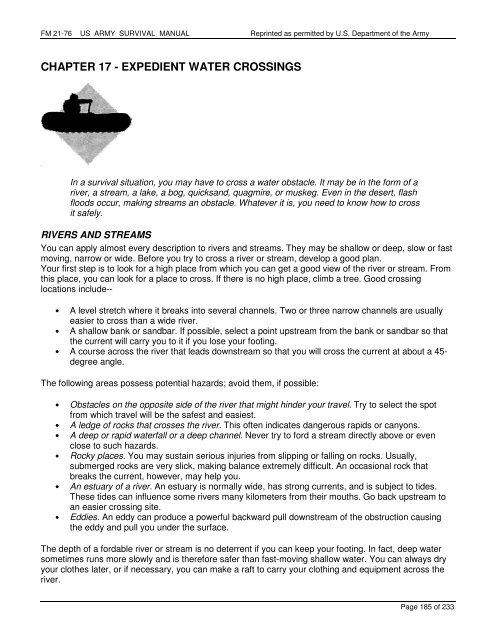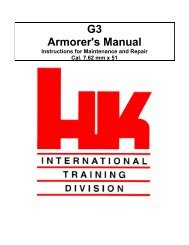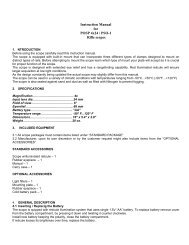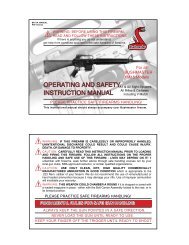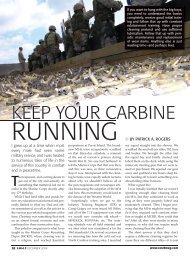FM 21-76 US ARMY SURVIVAL MANUAL - AR15.com
FM 21-76 US ARMY SURVIVAL MANUAL - AR15.com
FM 21-76 US ARMY SURVIVAL MANUAL - AR15.com
You also want an ePaper? Increase the reach of your titles
YUMPU automatically turns print PDFs into web optimized ePapers that Google loves.
<strong>FM</strong> <strong>21</strong>-<strong>76</strong> <strong>US</strong> <strong>ARMY</strong> <strong>SURVIVAL</strong> <strong>MANUAL</strong> Reprinted as permitted by U.S. Department of the Army<br />
CHAPTER 17 - EXPEDIENT WATER CROSSINGS<br />
In a survival situation, you may have to cross a water obstacle. It may be in the form of a<br />
river, a stream, a lake, a bog, quicksand, quagmire, or muskeg. Even in the desert, flash<br />
floods occur, making streams an obstacle. Whatever it is, you need to know how to cross<br />
it safely.<br />
RIVERS AND STREAMS<br />
You can apply almost every description to rivers and streams. They may be shallow or deep, slow or fast<br />
moving, narrow or wide. Before you try to cross a river or stream, develop a good plan.<br />
Your first step is to look for a high place from which you can get a good view of the river or stream. From<br />
this place, you can look for a place to cross. If there is no high place, climb a tree. Good crossing<br />
locations include--<br />
• A level stretch where it breaks into several channels. Two or three narrow channels are usually<br />
easier to cross than a wide river.<br />
• A shallow bank or sandbar. If possible, select a point upstream from the bank or sandbar so that<br />
the current will carry you to it if you lose your footing.<br />
• A course across the river that leads downstream so that you will cross the current at about a 45degree<br />
angle.<br />
The following areas possess potential hazards; avoid them, if possible:<br />
• Obstacles on the opposite side of the river that might hinder your travel. Try to select the spot<br />
from which travel will be the safest and easiest.<br />
• A ledge of rocks that crosses the river. This often indicates dangerous rapids or canyons.<br />
• A deep or rapid waterfall or a deep channel. Never try to ford a stream directly above or even<br />
close to such hazards.<br />
• Rocky places. You may sustain serious injuries from slipping or falling on rocks. Usually,<br />
submerged rocks are very slick, making balance extremely difficult. An occasional rock that<br />
breaks the current, however, may help you.<br />
• An estuary of a river. An estuary is normally wide, has strong currents, and is subject to tides.<br />
These tides can influence some rivers many kilometers from their mouths. Go back upstream to<br />
an easier crossing site.<br />
• Eddies. An eddy can produce a powerful backward pull downstream of the obstruction causing<br />
the eddy and pull you under the surface.<br />
The depth of a fordable river or stream is no deterrent if you can keep your footing. In fact, deep water<br />
sometimes runs more slowly and is therefore safer than fast-moving shallow water. You can always dry<br />
your clothes later, or if necessary, you can make a raft to carry your clothing and equipment across the<br />
river.<br />
Page 185 of 233


